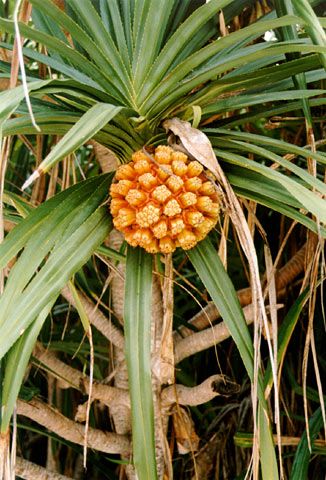
Its trunk bears plenty of prop roots. Its leaves spirals the branches, and crowds at the end.
Parts utilized
Leaves and roots.
Properties
The prop roots possess diuretic properties.
Oil and attar considered stimulant and antispasmodic.
Considered emmenagogue.
Fruits of wild forms contain calcium oxalate crystals which may cause mouth irritation.
Uses
Diuretic: Take decoction of fresh or dried prop root as tea.
- Roots used to strengthen the gums.
- In the Philippines, as far back as 1837, water from cuts made near the base of the trunk use to stimulate urination.
Headache, arthritis, stomach spasms: Decoction of leaves.
- Poultice of fresh leaves mixed with oil also used for headaches.
- Wound healing: Pulverized dried leaves used to facilitate wound healing.
- Poultice of mash of cabbage of plant, mixed with salt and juice of Citrus microcarpa, for abscesses.
- Decoction of roots believed to have aphrodisiac and cardiotonic properties.
- Also used for arthritis and to prevent spontaneous abortion.
- Chewing the roots strengthens the gums.
- Decoction of aerial roots use as beverage for cases of blenorrhea.
- Decoction of roots combined with sap of banana plant for urethral injections for variety of urinary complaints.
- Leaves of plant titurated into a mash, slightly salted and added with juice of Citrus microcarpa, used as hot poultice for new boils.
- In Ayurveda, leaves used for filarial diseases, leucorrhea, leprosy, smallpox, scabies, syphilis and leukoderma.
- In traditional Indian systems, used for filarial disease, leucorrhea and as emmenagogue.
- Anthers of male flowers used for earaches and headaches.
- In the Marshall Islands, used for abnormal menstrual bleeding, after delivery, infant jaundice, colic and restlessness.
- In Palau, roots used to make a drink to alleviate stomach cramps. Leaves used to alleviate vomiting.
No comments:
Post a Comment